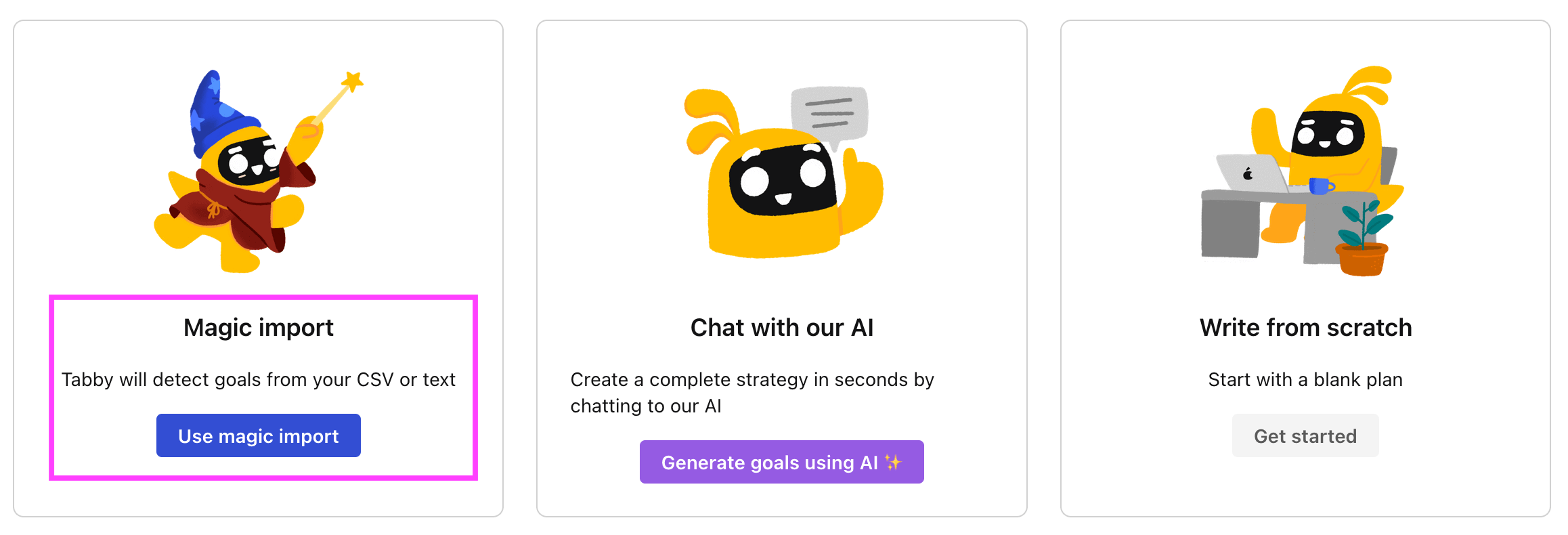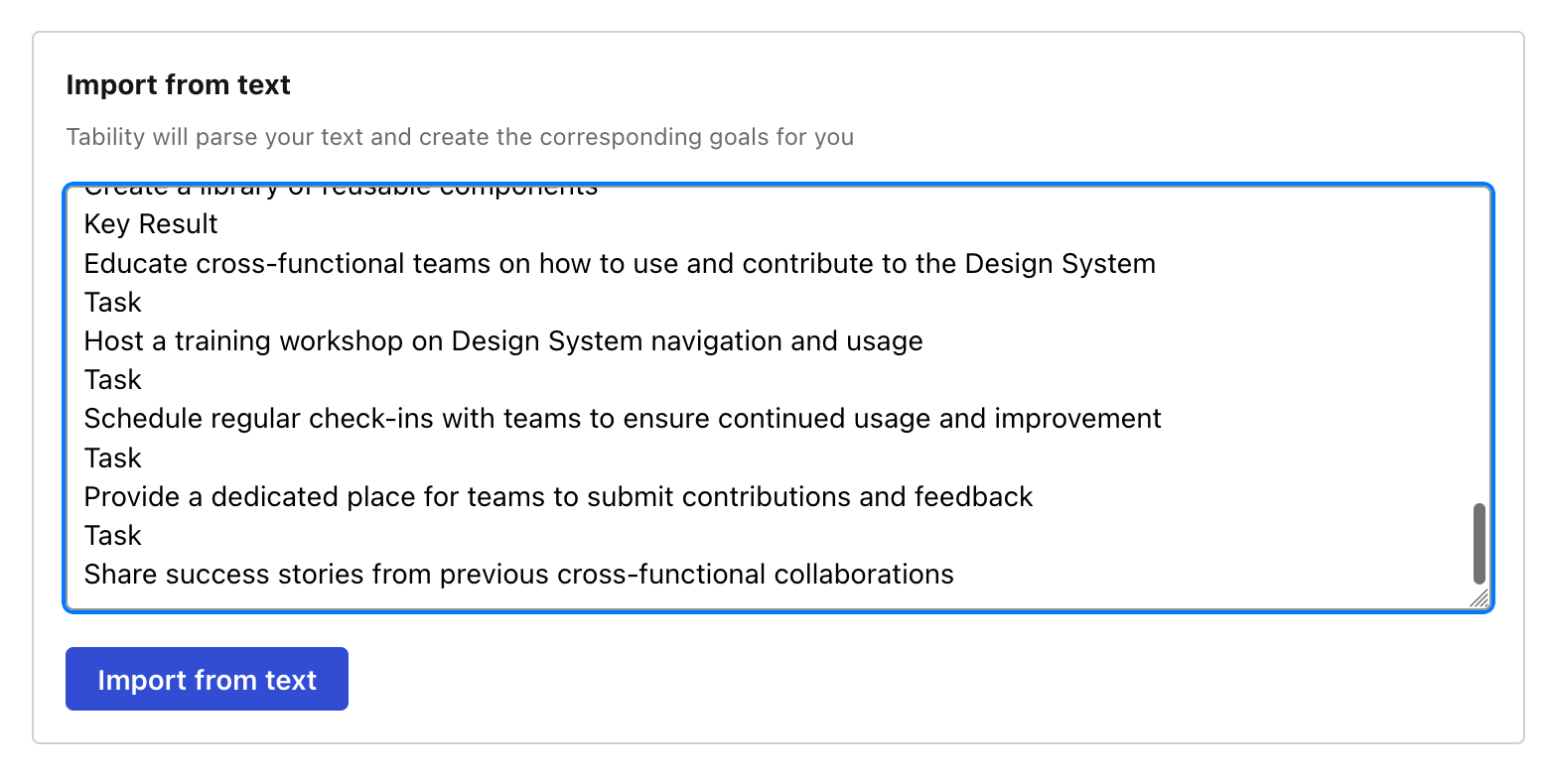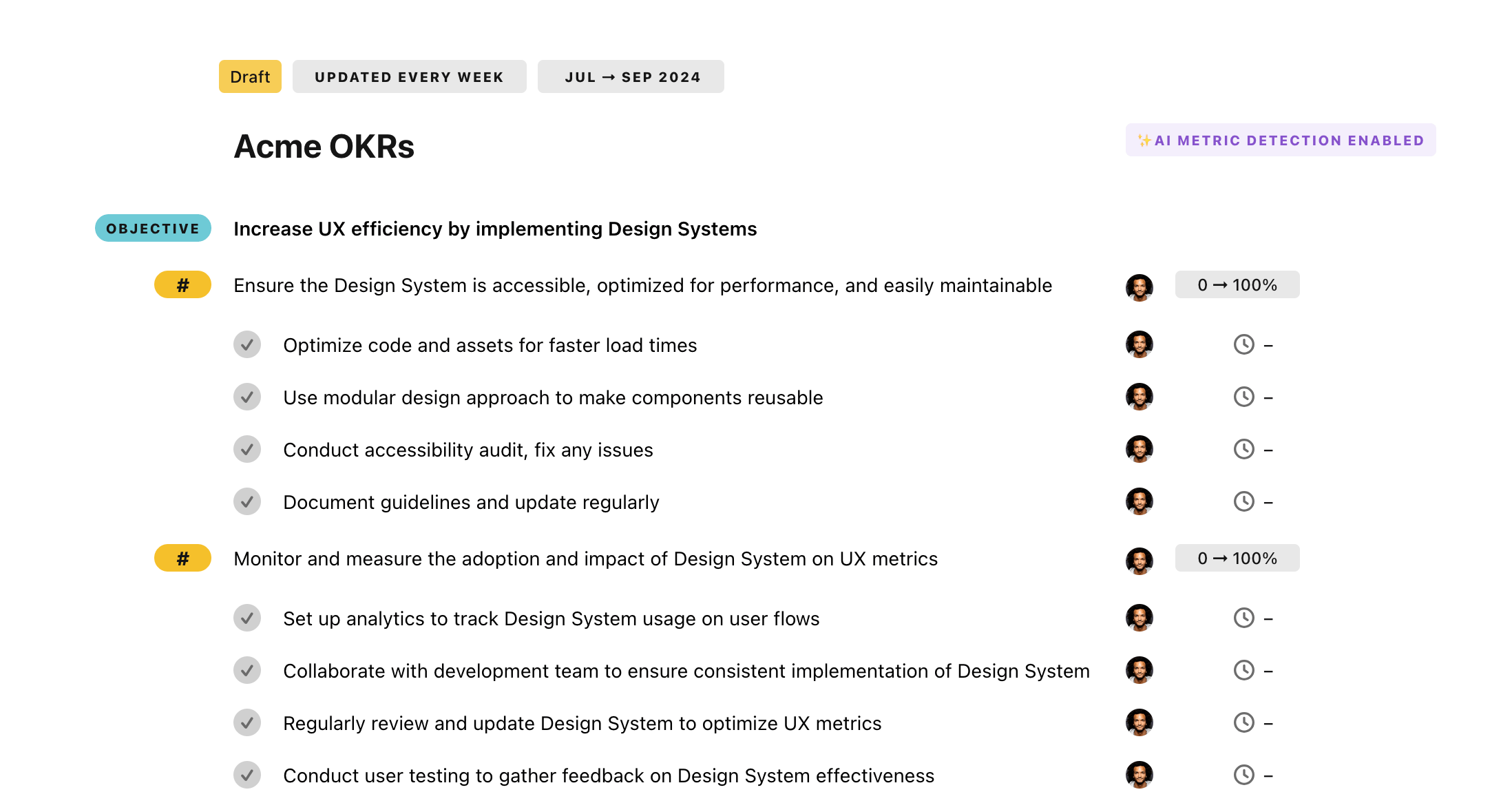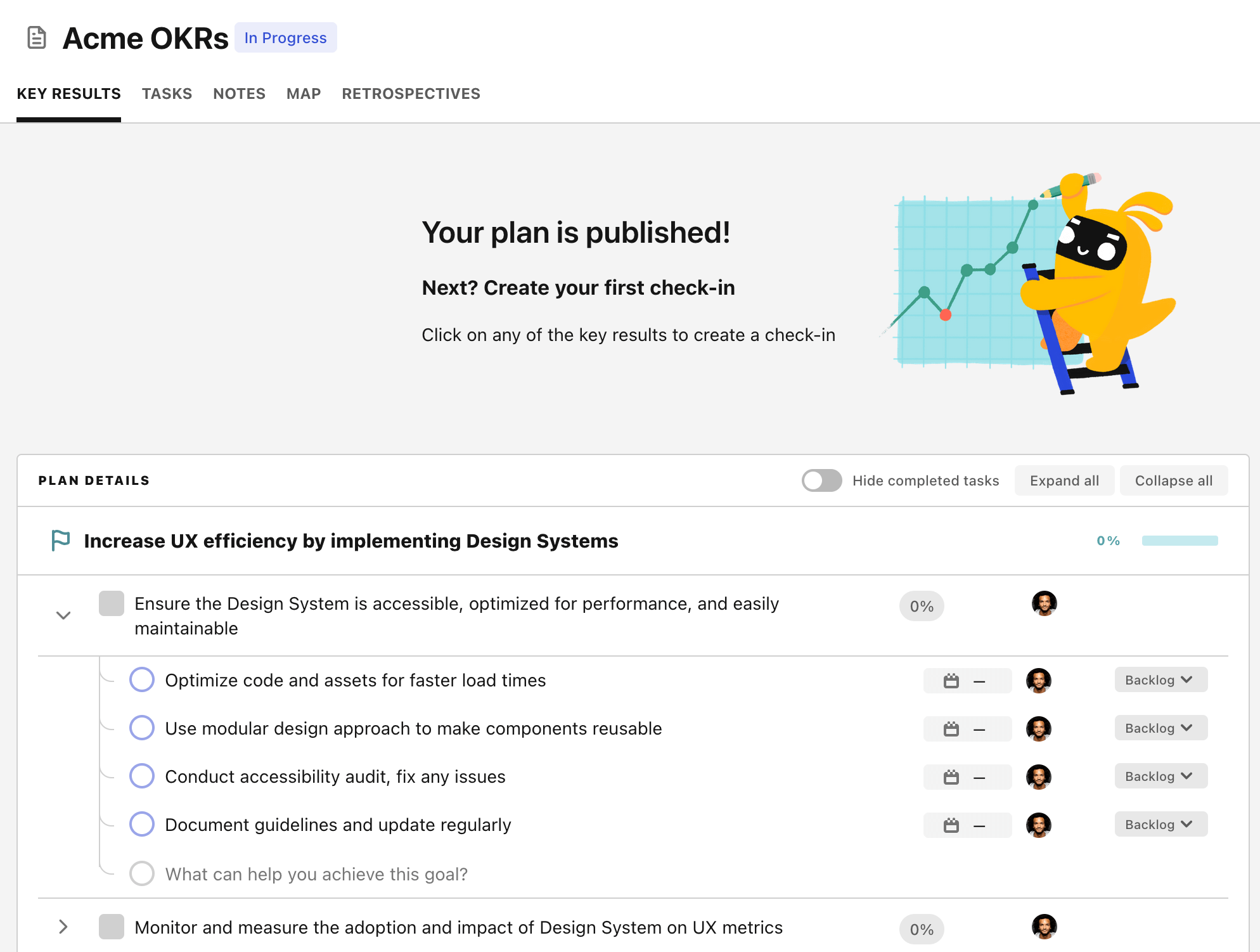OKR template to transform company with lean and agile focus
Your OKR template
The first outcome concerns hiking customer satisfaction by deploying products and services faster through agile development. Strategies include continuous customer satisfaction surveys, aggressive yet feasible project timelines, implementing agile development processes, and investing in employee training to enhance agile development skills and productivity.
The second outcome gears towards hiking employee engagement by incorporating lean and agile practices for better teamwork. Strategies to accomplish this include establishing cross-functional teams, running sessions on lean and agile practices for all employees, introducing consistent feedback loops and communication channels, and recognizing and rewarding those employees who actively take part in lean and agile practices.
The third outcome aims to reduce operational waste by implementing lean principles and hitting measurable efficiency improvements. Strategies here comprise routine progress monitoring via key performance indicators, conducting a waste assessment to find rooms for improvement, streamlining processes by getting rid of non-value added activities, and developing a lean implementation plan with explicit goals, roles, and responsibilities.
ObjectiveTransform company with lean and agile focus
KRIncrease customer satisfaction by delivering products and services faster through agile development
Conduct regular customer satisfaction surveys to collect feedback and identify areas for improvement
Set achievable and aggressive timelines for each project to ensure faster product and service delivery
Implement agile development process to streamline product and service delivery workflows
Invest in employee training and development to enhance skills and productivity in agile development
KRIncrease employee engagement by implementing lean and agile practices for better collaboration
Establish cross-functional teams to encourage collaboration and knowledge sharing among employees
Conduct training sessions on lean and agile practices for all employees
Implement regular feedback loops and communication channels to foster open dialogues between employees and management
Recognize and reward employees who actively participate in lean and agile practices
KRReduce operational waste by implementing lean principles and achieving measurable efficiency improvements
Monitor progress regularly through key performance indicators and adjust strategies as needed
Conduct a waste assessment to identify areas with potential for improvement
Streamline processes by eliminating non-value added activities and optimizing workflows
Develop a lean implementation plan with clear goals, roles, and responsibilities
KRImprove team performance by conducting regular agile training and implementing continuous improvement practices
Develop and implement strategies for continuous improvement based on analysis results
Implement a system for gathering feedback and suggestions from team members
Analyze team performance data and identify areas for improvement
Schedule regular agile training sessions for the team
How to edit and track OKRs with Tability
You'll probably want to edit the examples in this post, and Tability is the perfect tool for it.
Tability is an AI-powered platform that helps teams set better goals, monitor execution, and get help to achieve their objectives faster.
With Tability you can:
- Use AI to draft a complete set of OKRs in seconds
- Connect your OKRs and team goals to your project
- Automate reporting with integrations and built-in dashboard
Instead of having to copy the content of the OKR examples in a doc or spreadsheet, you can use Tability’s magic importer to start using any of the examples in this page.
The import process can be done in seconds, allowing you to edit OKRs directly in a platform that knows how to manage and track goals.
Step 1. Sign up for a free Tability account
Go tohttps://tability.app/signup and create your account (it's free!)
Step 2. Create a plan
Follow the steps after your onboarding to create your first plan, you should get to a page that looks like the picture below.

Step 3. Use the magic importer
Click on Use magic import to open up the Magic Import modal.
Now, go back to the OKR examples, and click on Copy on the example that you’d like to use.

Paste the content in the text import section. Don’t worry about the formatting, Tability’s AI will be able to parse it!

Now, just click on Import from text and let the magic happen.

Once your example is in the plan editor, you will be able to:
- Edit the objectives, key results, and tasks
- Click on the target 0 → 100% to set better target
- Use the tips and the AI to refine your goals
Step 4. Publish your plan
Once you’re done editing, you can publish your plan to switch to the goal-tracking mode.

From there you will have access to all the features that will help you and your team save hours with OKR reporting.
- 10+ built-in dashboards to visualise progress on your goals
- Weekly reminders, data connectors, and smart notifications
- 9 views to map OKRs to strategic projects
- Strategy map to align teams at scale